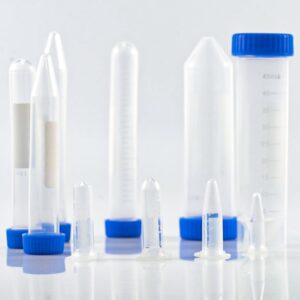In the world of scientific research and laboratory work, centrifuge tube play a crucial role. These small but mighty tubes are designed to withstand high speeds and forces, allowing for the separation of substances in a variety of applications. Whether you’re working in the fields of biology, chemistry, or medical research, understanding the different types of centrifuge tubes and their uses is essential.
In this ultimate guide, we will delve into the various types of centrifuge tubes available, including conical bottom tubes, round bottom tubes, and self-standing tubes, and explore their specific uses and benefits. From basic sample preparation to demanding tasks like DNA extraction and protein purification, we will cover everything you need to know about choosing the right centrifuge tubes for your experiments.
But it’s not just about having the right tubes – it’s also about using them correctly. We will provide best practices for handling, labeling, and storing centrifuge tubes to ensure accurate and reliable results. So, get ready to spin into the world of centrifuge tubes and discover the key to successful laboratory experiments.
Types of centrifuge tube
Centrifuge tube come in a variety of shapes and sizes, each designed to serve a specific purpose in the laboratory. The most common types of centrifuge tubes include:
Conical bottom tubes:
These tubes have a tapered bottom that comes to a point, allowing for efficient separation and easy retrieval of pellets. They are commonly used for applications such as cell culture, DNA extraction, and protein purification.
Round bottom tubes:
With a rounded bottom, these tubes are well-suited for applications where a larger sample volume is required, such as blood processing and cell washing. The rounded shape also makes them easier to mix and resuspend samples.
Self-standing tubes:
These tubes have a flat bottom, allowing them to stand upright on the bench without the need for a rack or holder. They are often used for storage and transport of samples, as well as for applications where a stable platform is required, such as centrifugation of large volumes.
In addition to these common types, centrifuge tubes are also available in a range of materials, including polypropylene, polycarbonate, and glass. The choice of material will depend on the specific application, as well as factors such as chemical compatibility, temperature resistance, and transparency.

Common uses of centrifuge tube
Centrifuge tube are essential tools in a wide range of scientific disciplines, from biology and chemistry to medical research and forensics. Some of the most common uses of centrifuge tubes include:
Sample preparation:
Centrifuge tube are used to separate and concentrate various components of a sample, such as cells, organelles, and macromolecules, through the application of centrifugal force.
DNA and RNA extraction:
Centrifuge tube play a crucial role in the extraction and purification of nucleic acids, such as DNA and RNA, from biological samples like cells, tissues, or microorganisms.
Protein purification:
Centrifuge tubes are used in the process of protein purification, where they help to isolate and concentrate specific proteins from complex mixtures, such as cell lysates or tissue homogenates.
In addition to these common applications, centrifuge tubes are also used in fields like environmental science, food science, and clinical diagnostics, where they facilitate tasks such as water analysis, food sample preparation, and blood or urine testing.
Factors to consider when choosing centrifuge tube
When selecting the appropriate centrifuge tube for your experiments, there are several key factors to consider:
- Sample volume: The volume of your sample will determine the size and capacity of the centrifuge tube you need. Choosing the right tube size ensures efficient separation and recovery of your sample.
- Centrifugal force: The maximum centrifugal force (g-force) that the tubes can withstand is an important consideration, as this determines the speed and duration of centrifugation that can be safely applied.
- Material compatibility: The chemical and thermal resistance of the tube material must be compatible with the substances and conditions present in your experiment, to prevent sample contamination or tube degradation.
Other factors to consider include the need for sterility, the presence of special features (such as screw caps or graduated markings), and the overall ease of use and handling. By carefully evaluating these factors, you can ensure that you select the most suitable centrifuge tubes for your specific application.
Best practices for handling and using centrifuge tube
Proper handling and use of centrifuge tubes are essential to ensure accurate and reliable results in your experiments. Here are some best practices to follow:
Proper labeling:
Clearly label each centrifuge tube with the sample ID, date, and any other relevant information to prevent mix-ups and ensure traceability.
Balanced loading:
When loading the centrifuge, make sure to balance the tubes opposite each other to maintain an even distribution of weight and prevent damage to the centrifuge.
Secure caps:
Ensure that the caps or lids of the centrifuge tube are securely closed to prevent leaks or spills during centrifugation.
Additionally, it’s important to follow the manufacturer’s recommendations for maximum speed and duration of centrifugation, as well as any specific handling instructions for the type of centrifuge tube being used. By adhering to these best practices, you can minimize the risk of sample loss or contamination and obtain reliable, reproducible results.

Proper maintenance and cleaning of centrifuge tube
Maintaining and cleaning centrifuge tube is crucial to ensure their longevity and prevent cross-contamination between samples. Here are some important steps to follow:
- Cleaning after each use: After each experiment, thoroughly clean the centrifuge tube by rinsing with distilled water or an appropriate cleaning solution, depending on the nature of the sample.
- Sterilization: For applications that require sterile conditions, such as cell culture or microbiological studies, the centrifuge tubes should be sterilized using methods like autoclaving or UV irradiation.
- Storage and drying: Properly store the cleaned and/or sterilized centrifuge tubes in a dry, dust-free environment to prevent contamination. Ensure that the tubes are completely dry before use.
- Regular inspection and replacement: Periodically inspect the centrifuge tubes for any signs of wear, cracks, or discoloration, and replace them as necessary to maintain the integrity of your samples and experiments.
Safety precautions when working with centrifuge tub
Working with centrifuge tubes requires careful attention to safety protocols to minimize the risk of accidents and sample contamination. Some key safety precautions include:
Proper personal protective equipment (PPE):
Always wear appropriate PPE, such as lab coats, gloves, and safety glasses, when handling centrifuge tubes to protect yourself from potential spills or splashes.
Centrifuge maintenance:
Ensure that the centrifuge is properly maintained and calibrated according to the manufacturer’s instructions to prevent malfunctions or accidents during operation.
Containment and spill management:
In the event of a spill or leak, have a plan in place for containing the affected area and properly disposing of any contaminated materials.
Additionally, it’s crucial to follow the recommended speed and duration limits for the specific type of centrifuge tube being used, as exceeding these limits can lead to tube failure and potential safety hazards.
Recommended brands and suppliers of centrifuge tube
When it comes to choosing high-quality centrifuge tube, CytoScientific is a brand you can trust. As a manufacturer of premium plasticware, CytoScientific offers a wide range of centrifuge tubes designed to meet the diverse needs of modern laboratories. Our tubes are made from high-grade polypropylene, ensuring durability, chemical resistance, and optimal performance during centrifugation.
At CytoScientific, we prioritize quality and precision, providing centrifuge tubes that are not only reliable but also cost-effective. Whether you need conical tubes, round-bottom tubes, or specialized options for specific applications, our products are designed to deliver consistent results. We also offer various tube sizes and configurations to accommodate different sample volumes and centrifugation requirements.
Choosing CytoScientific means investing in products backed by a commitment to excellence and customer support. Our dedication to innovation ensures that our centrifuge tubes are among the best in the market, providing you with the confidence you need for your laboratory’s success.
Frequently asked questions about centrifuge tube
Q: What is the difference between conical and round-bottom centrifuge tubes?
A: Conical-bottom tubes have a tapered bottom that comes to a point, allowing for efficient separation and easy retrieval of pellets. Round-bottom tubes have a rounded bottom, which makes them well-suited for applications where a larger sample volume is required, such as blood processing and cell washing.
Q: Can I use the same centrifuge tubes for different experiments?
A: It is generally not recommended to reuse centrifuge tubes for different experiments, as this can lead to cross-contamination between samples. It is best to use a fresh, clean tube for each experiment to ensure the integrity of your results.
Q: How do I properly store centrifuge tube?
A: Centrifuge tubes should be stored in a clean, dry environment, away from direct sunlight and any potential sources of contamination. If the tubes are sterilized, they should be stored in a way that maintains their sterility, such as in a sealed bag or container.
Q: What is the maximum speed or g-force that I can use with my centrifuge tube?
A: The maximum speed or g-force that can be safely used with centrifuge tubes depends on the specific tube type and material. Always refer to the manufacturer’s recommendations or the tube’s specifications to ensure that you do not exceed the recommended limits, as this can lead to tube failure and potential safety hazards.
Q: How do I properly dispose of used centrifuge tubes?
A: The disposal of used centrifuge tubes should follow your laboratory’s or institution’s protocols for hazardous waste management. This may involve segregating tubes based on the nature of the sample (e.g., biohazardous, radioactive) and disposing of them through appropriate channels, such as autoclaving or incineration.
Conclusion: Importance of using the right centrifuge tube for accurate results
Centrifuge tubes are essential tools in the world of scientific research and laboratory work, playing a crucial role in a wide range of applications, from sample preparation to DNA extraction and protein purification. By understanding the different types of centrifuge tubes and their specific uses, as well as following best practices for handling, maintenance, and safety, you can ensure that your experiments yield accurate and reliable results.
Whether you’re working in biology, chemistry, or medical research, the right choice of centrifuge tubes can make all the difference in the success of your experiments. By investing in high-quality tubes from reputable brands and suppliers, and adhering to proper protocols, you can minimize the risk of sample loss, contamination, or damage, and unlock the full potential of your scientific endeavors.
So, take the time to explore the world of centrifuge tube and discover how these unassuming yet powerful tools can enhance the precision and efficiency of your laboratory work. With the right knowledge and best practices, you can elevate your research to new heights and push the boundaries of scientific discovery.

